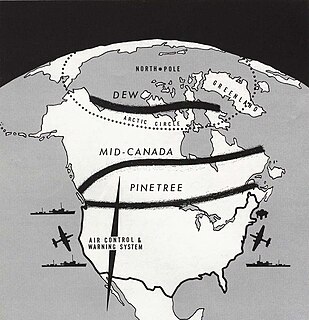
The Pinetree Line was a series of radar stations located across the northern United States and southern Canada at about the 50th parallel north, along with a number of other stations located on the Atlantic and Pacific coasts. Run by North American Aerospace Defense Command (NORAD), over half were manned by United States Air Force personnel with the balance operated by the Royal Canadian Air Force. The line was the first coordinated system for early detection of a Soviet bomber attack on North America, but before the early 1950s radar technology quickly became outdated and the line was in full operation only for a short time.

RCAF Station Beaver Bank was a long-range Pinetree Line early warning radar station operated by the Royal Canadian Air Force, located in central Nova Scotia near the community of Beaver Bank. The site is now known as Beaver Bank Villa.
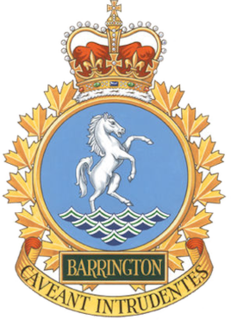
Canadian Forces Station Barrington, also referred to as CFS Barrington, was a Canadian Forces Station located in the unincorporated community of Baccaro, Nova Scotia at Baccaro Point near the southwesternmost point of the province.

Canadian Forces Base Gander, is a Canadian Forces base located in Gander, Newfoundland and Labrador. It is operated as an air force base by the Royal Canadian Air Force and is home to air/marine search and rescue operations that cover a vast swath of the western North Atlantic and southern Arctic. Its primary RCAF lodger unit is 9 Wing, commonly referred to as 9 Wing Gander.

Canadian Forces Station Armstrong is a former General Surveillance Radar station. It is located 1.1 miles (1.8 km) east of Armstrong, Thunder Bay District, Ontario. It was closed in 1974.

Canadian Forces Station Moosonee was a military installation located in Moosonee, Ontario.

Canadian Forces Station Lowther is a closed General Surveillance Radar station. It is located 12.7 miles (20.4 km) east-southeast of Mattice-Val Côté, Ontario. It was closed in 1987.
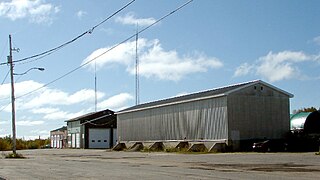
Canadian Forces Station Foymount was a military radar station in Foymount, Ontario, Canada,.
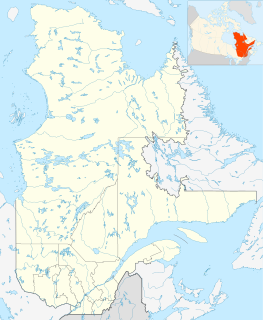
Canadian Forces Station Lac St. Denis is a former Canadian Forces Station that was located by Lac St. Denis, 60 miles north of Montreal in the Laurentian Mountains.

RCAF Station St. Margarets is a former Royal Canadian Air Force station and later a Canadian Forces detachment located in the community of St. Margarets, New Brunswick.

Canadian Forces Station Ramore is a closed General Surveillance Radar station. It is located 4 miles (6.4 km) east of Ramore, Ontario. It was closed in 1974. It was operated as part of the Pinetree Line network controlled by NORAD. It has since been sold and is now private property.

Canadian Forces Station Sioux Lookout is a closed General Surveillance Radar station. It is located 3.7 miles (6.0 km) west of Sioux Lookout, Ontario. It was closed in 1987.

Canadian Forces Station Beaverlodge is a closed General Surveillance Radar station. It is located 4.9 miles (7.9 km) east-northeast of Beaverlodge, Alberta. It was closed in 1988.
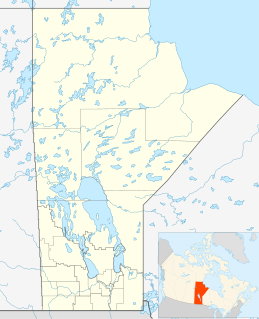
Canadian Forces Station Beausejour is a closed General Surveillance Radar station. It is located 45.1 miles (72.6 km) east-northeast of Winnipeg, Manitoba. It was closed in 1986.
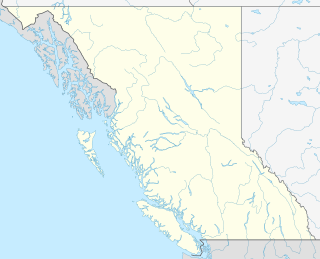
Canadian Forces Station Baldy Hughes is a closed General Surveillance Radar station. It is located 22.3 miles (35.9 km) south-southwest of Prince George, British Columbia. It was closed in 1988.

Canadian Forces Station Kamloops is a closed General Surveillance Radar station. It is located 12.8 miles (20.6 km) northeast of Kamloops, British Columbia. It was closed in 1988.

Royal Canadian Air Force Station Yorkton was a Long Range Radar (LRR) and Ground Air Transmitter Receiver (GATR) facility of the Pinetree Line. The site was SAGE compatible from day one. It was located near Yorkton, Saskatchewan, Canada.

Royal Canadian Air Force Station St. Sylvestre was a Radar station of the Canadian Pinetree Line, located at Saint-Sylvestre, Quebec, in the Lotbinière Region, sixty-nine kilometres south Quebec City. Construction starting in 1952, the Station opened on 15 September 1953, first as RCAF Station Ste-Marie, being renamed RCAF Station St. Sylvestre, on 1 August 1955.

Canadian Forces Station Moisie, also known as CFS Moisie, is a former Canadian Forces Station located in the community of Moisie, Quebec.
RCAF Station Puntzi Mountain is a closed United States Air Force (USAF) and Royal Canadian Air Force (RCAF) General Surveillance radar station. It was located in Canada 200 miles north of Vancouver, British Columbia.














